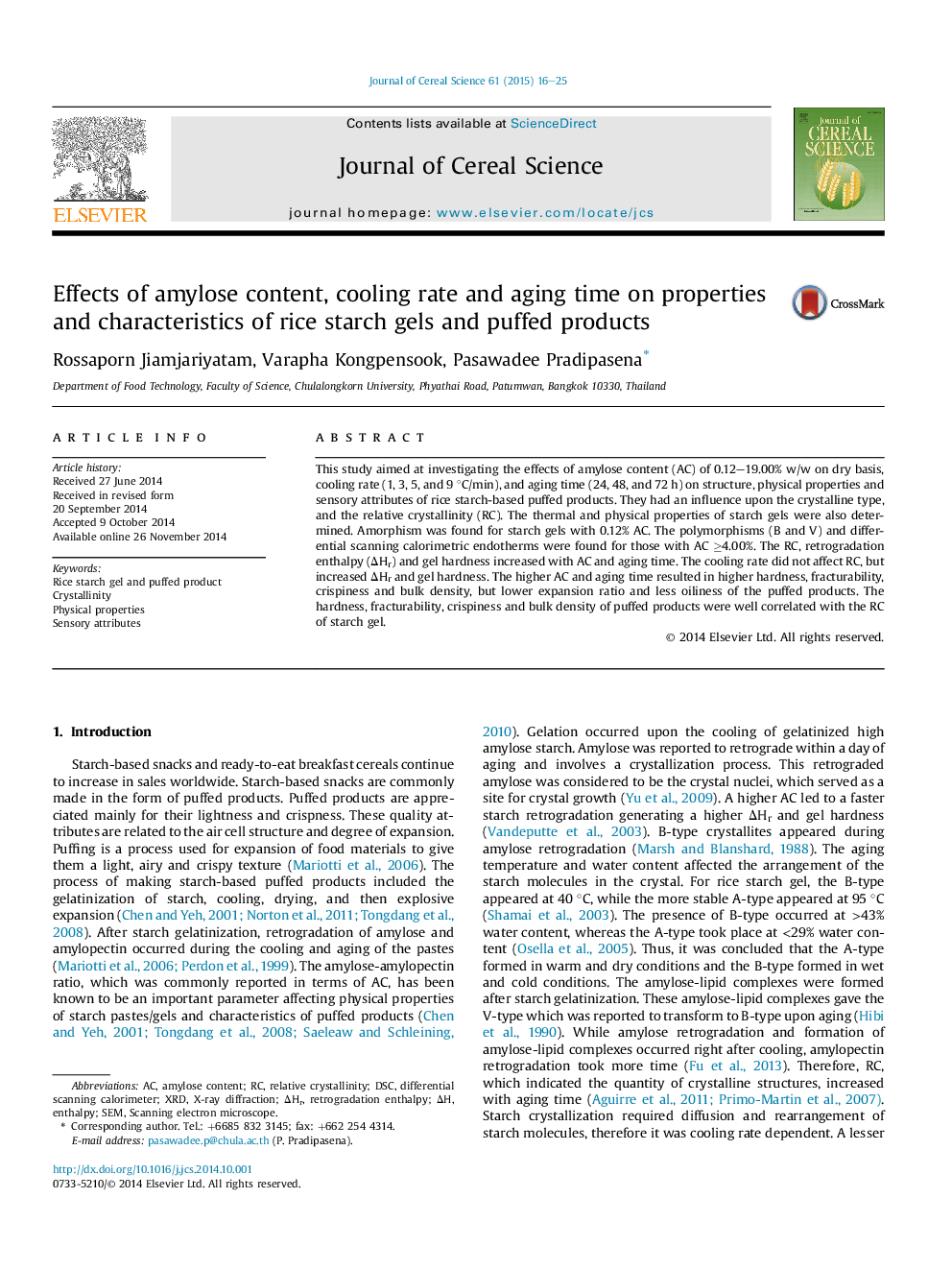| Article ID | Journal | Published Year | Pages | File Type |
|---|---|---|---|---|
| 4515695 | Journal of Cereal Science | 2015 | 10 Pages |
•Relative crystallinity of gel controlled the fried puffed-product's texture.•Higher amylose content reduced oiliness of the puffed product.•Longer aging time increased the crispiness of the puffed product.•The cooling rate is not a key factor for gel and puffed-product properties.•The results give valuable process design data needed for desired product quality.
This study aimed at investigating the effects of amylose content (AC) of 0.12–19.00% w/w on dry basis, cooling rate (1, 3, 5, and 9 °C/min), and aging time (24, 48, and 72 h) on structure, physical properties and sensory attributes of rice starch-based puffed products. They had an influence upon the crystalline type, and the relative crystallinity (RC). The thermal and physical properties of starch gels were also determined. Amorphism was found for starch gels with 0.12% AC. The polymorphisms (B and V) and differential scanning calorimetric endotherms were found for those with AC ≥4.00%. The RC, retrogradation enthalpy (ΔHr) and gel hardness increased with AC and aging time. The cooling rate did not affect RC, but increased ΔHr and gel hardness. The higher AC and aging time resulted in higher hardness, fracturability, crispiness and bulk density, but lower expansion ratio and less oiliness of the puffed products. The hardness, fracturability, crispiness and bulk density of puffed products were well correlated with the RC of starch gel.
